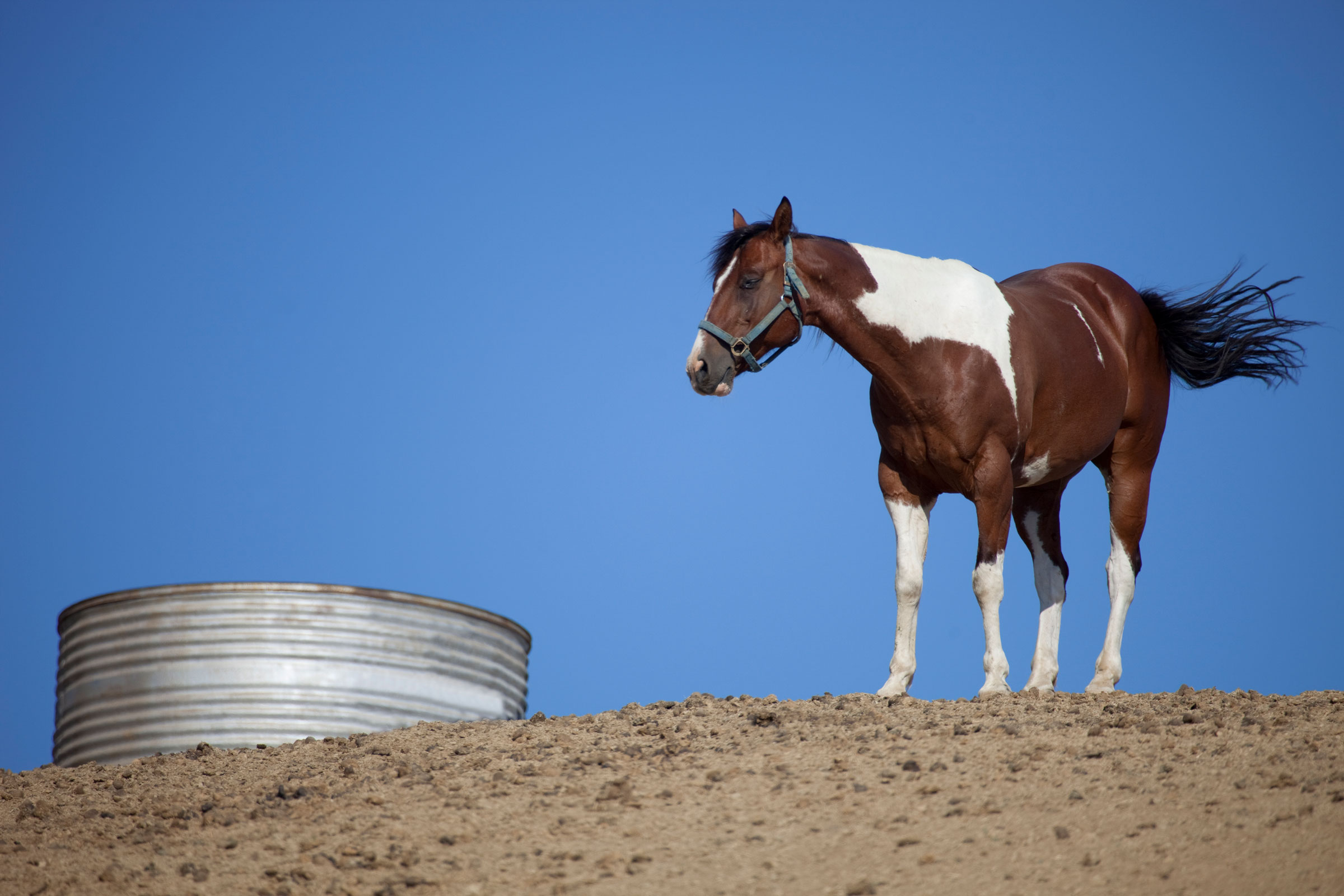
Water is a critical nutrient for horses to maintain digestive function, intestinal health and body fluid balance. Anything that discourages a horse from drinking increases the potential for colic or dehydration issues.
Horse owners aren’t always as fastidious as they should be in keeping water tanks clean. A study tested the amount of total dissolved solids (TDS, i.e. aggregate concentration of ions), water turbidity (NTU, i.e. possibly from fecal contamination), and chlorophyll a (from potentially harmful algae blooms) in plastic versus metal tanks, with or without goldfish [Catalano, D.N.; Heins, B.J.; Missaghi, S. The Effect of Goldfish on Water Quality in Horse Stock Tanks. Journal of Equine Veterinary Science 2019, vol 79; pp. 73-78].
It has been speculated that goldfish eat algae and therefore might improve water quality for longer periods of time. The study occurred during the warm months of June through October. In a dry lot housing six horses, one black polyethylene plastic and one galvanized steel metal tank were stocked with five goldfish, each 3-4 cm long. No food supplementation was given to the goldfish so all they had available was algae in the tank. Other similar tanks were placed in the dry lot but they didn’t contain goldfish. Half of each tank was fitted with plywood for shade and protection of goldfish from predators.
Readings of TDS and NTU were taken daily and weekly for chlorophyll a. After 28 days, the tanks were cleaned and rotated in position along the fence line to eliminate position bias by the horses. The results:
- TDS was lower in plastic compared to metal tanks.
- MTU and chlorophyll a were lower in metal tanks than plastic
- Goldfish lowered TDS but had no effect on NTU or chlorophyll a.
- The plastic tanks developed increased surface roughness that likely collects contaminants as well as being more difficult to clean than metal tanks.
- With rising water temperatures in hotter periods, TDS concentrations increased as did chlorophyll a.
- One interesting finding was that tanks with goldfish had virtually no insect eggs or larvae, whereas tanks without goldfish did.
Of significance is that none of the parameters evaluated—TDS, MTU or chlorophyll a, with or without goldfish—influenced a horse’s preference for drinking.
The overall conclusions of the study suggest that goldfish don’t necessarily influence water quality. However, tank type, water temperature, and vegetation play more central roles.








